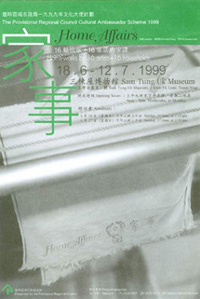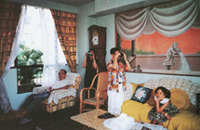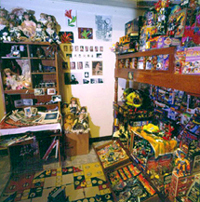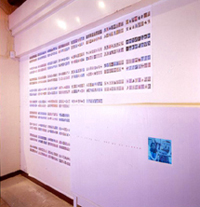|




|

Who are "artists"? Who are "the
public"? The identity of "artists"
can be drawn from social and historical systems
(such as education background and participation
in exhibition) which belong to the public sphere.
Whereas "public" simply means "non-artists".
Does categorization of this kind bring convenience
or polarization? To most people, and art institutions
most of all, "arts" associates with
"artists"; those who have never received
art training or held exhibition are denied of
such title. As far as "art" is concerned,
they can only be labeled audience or target for
outreach programs. Being remote from everyday
creativity, "arts" makes no relevance
to the "public". "Arts" and
creativity, which should come first?
From the very beginning, Home Affairs
is designed not as an educational (in its narrowest
definition) or social servicing activities. Both
genres in fact draw clear boundary between host
and guest/recipient. Who educates whom? Who services
whom? If the differentiation between "artists"
and "public" is a making of the mainstream
art system, we cannot but question this host-recipient
relationship. We cannot deny the value and good
will of "bringing art to the community",
but what we concern here are whether the "community"
and artworkers can understand each other on an
equal basis during the interaction, and whether
they are able to rationalize the process and make
mutual adjustment.
Home Affairs invites members of 16 households
to become partners to 16 Hong Kong artworkers.
Each pair is to create a unique piece of work
in or about the particular "home". As
an "experimental ground", "home"
is at the opposite pole of public exhibition space.
Public are hosts and artists become guests in
this most personal setting. The partnership emphasizes
collaboration so as to deepen and personalize
the artist-public interaction. Because of the
infinite variables, the outcome is unpredictable.
We realize the possible issues arise when artists,
who use to work in public space, "intrude"
into the personal space. But at the same time,
it is full of possibilities -- can it suggest
a new format of artworker-public relationship?
"Home" is both the theme and the catalyst.
We have avoided calling Home Affairs an
exhibition. The most essential part of the project
is the collaboration between the artists and household
participants. In addition, if the works are home-specific,
the public exhibition can only be a compromise.
The ideal way of presentation would have been
opening up the 16 homes for visitors. Only because
of privacy issues, we have to go back to conventional
exhibition venue and follow the less adventurous
host-guest allegory. In fact, no matter artists
or public, each person has a home. Every household
has its own unique history, collection and creativity.
Each home can be an exhibition in itself. If we
can all open up our home, each of us can then
be host and guest at the same time.
Participating artists included Amazing Twins,
Craig Au Yeung, Chen Miji, Choi Yan-chi, Afa Chiang,
Fan Yuk-ki, Freeman Lau, Evelyna Liang Kan, Connie
Lam, Benny Ding Leong, Tang Tin-Chai & Billy
Chiu, James Wong, Sara Wong, Wu Wing-yee, Eva
Yuen, 20F Art Organization. Home Affairs
was curated by Siu King-chung and Howard Chan.
|